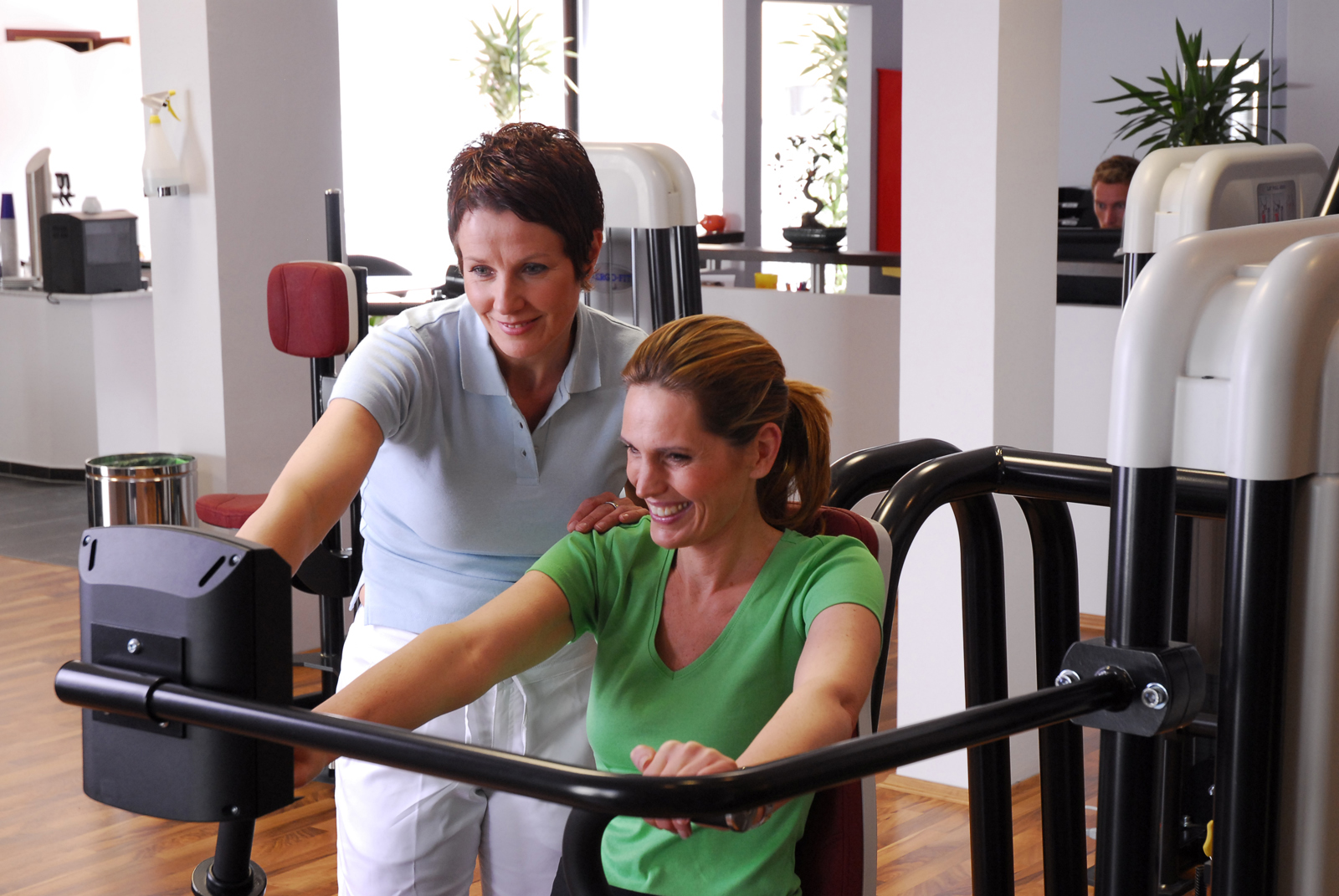Training to promote health
Many people use fitness studios to get back into shape after an injury. Fraunhofer researchers are now developing a system that will provide doctors with data on the exercises people do on the various machines. This should help them plan better training programs.
Marianne has constant pain in her right knee at the moment – she hurt it when she took a tumble skiing in the Swiss Alps. Everything happened so quickly: The searing pain, the helicopter ride to hospital, the operation the following day, and then a week later the return home with crutches to rest in a reclining chair. Her aim now is to mobilize the operated knee and regain full mobility of the joint – something she’ll achieve by following a targeted machine-based training plan drawn up by a physiotherapist.
In order to be able to devise training programs properly, physiotherapists and medical experts require detailed information on the progress of muscle build-up, the degree of mobility and the overall physical condition of the patient. Marianne’s general physician, in particular, needs to know how well her knee is recovering. But that’s not easy, because qualified data from the training machines she uses is not automatically made available to him. There is no direct connection between the software systems used by physiotherapists or rehabilitation specialists and general medical practices, and as a result, a great deal of potential is wasted. “The quality of treatment can be greatly improved if medical experts are able to assess training data,” explains Sven Meister, project manager at the Fraunhofer Institute for Software and Systems Engineering ISST in Dortmund. He and his team of co-workers have developed an interface that is able to transfer patient fitness training data to a medical practice computer system or hospital information system.
By developing their ‘eTraining’ system, the ISST scientists are seeking to promote a better flow of information between doctors, health insurance companies and training specialists when it comes to the personal efforts made by so many individuals to promote their own health. For the Fraunhofer IT experts, the basic imperative was to create a standardized information platform that would allow personal measurement data such as pulse, weight used, speed, duration and ‘range of motion’ of orthopedic rehabilitation measures to be sent to medical information systems. “eTraining combines a patient’s training plan with their current training data and makes the information available to authorized viewers,” says Meister. The scientists are counting on specific standards to render their solution compatible with all IT systems used by healthcare providers. Their chosen model for linking external training data into a hospital network is U.S. standard Health Level Seven (HL7). In cooperation with fitness equipment manufacturer Ergo-Fit, they have created a data model that amalgamates training-related data with medical treatment data using the HL7 Clinical Document Architecture (CDA). And together, the partners have developed a CDA-based training plan that specialists can use to assess how successful any given fitness training plan is from the medical point of view.
But exactly what information is needed if medical experts are to be able to assess physical training? “We’re currently holding discussions with various bodies of experts in order to reach agreement on an industry-wide standard that also takes into account the needs of health insurance companies,” reports IT expert Meister. If this exchange of information is developed further, it could potentially give rise to new business models, for example by transferring a greater proportion of rehabilitation work to fitness studios. Ergo-Fit and the ISST are convinced that “networking the health markets will improve the quality of machine-based training efforts in both rehabilitation and preventive medicine,” says Meister.
